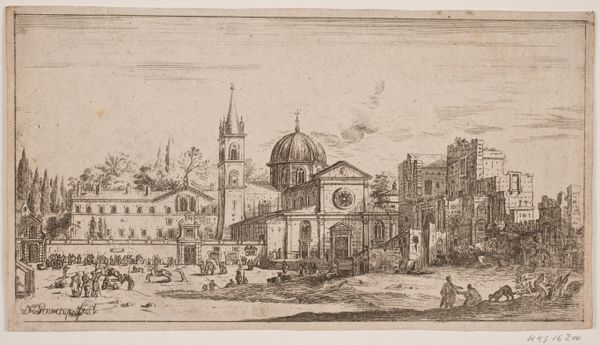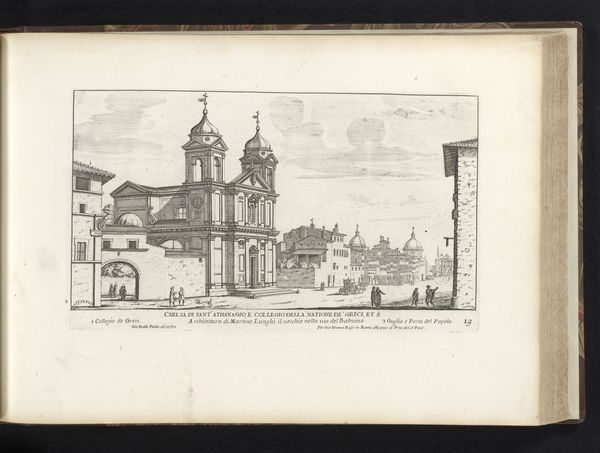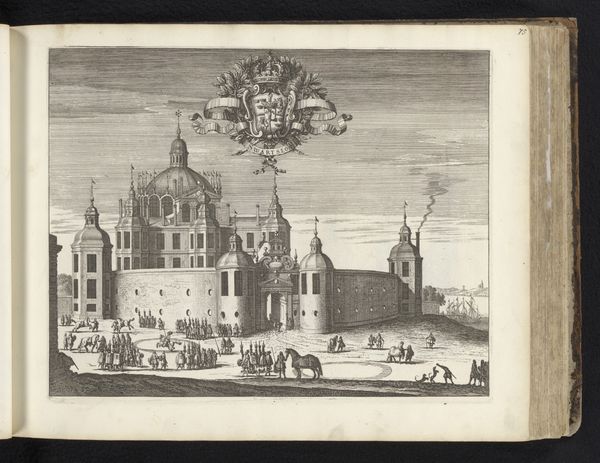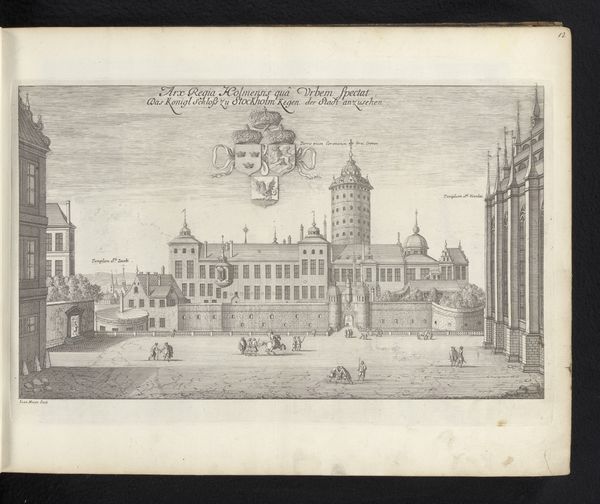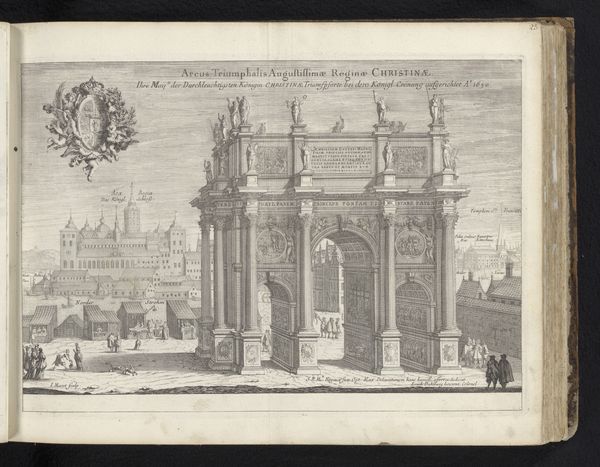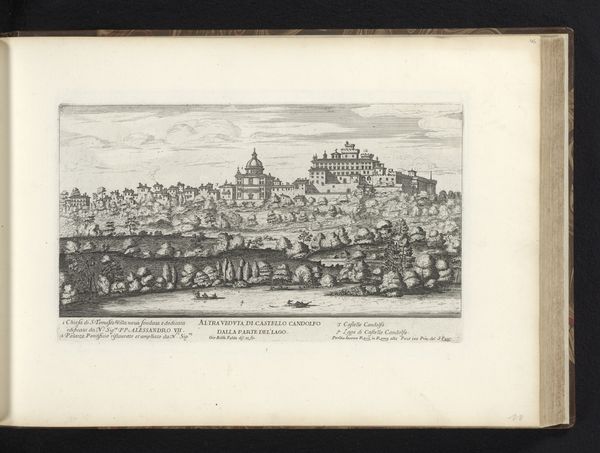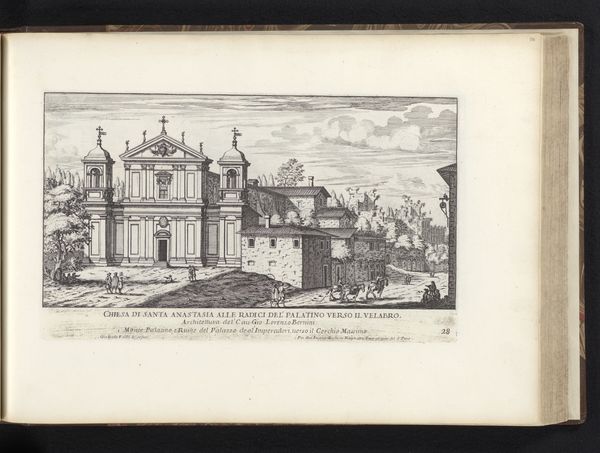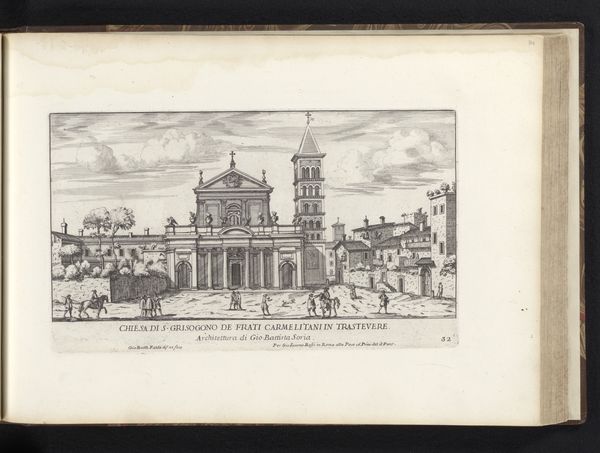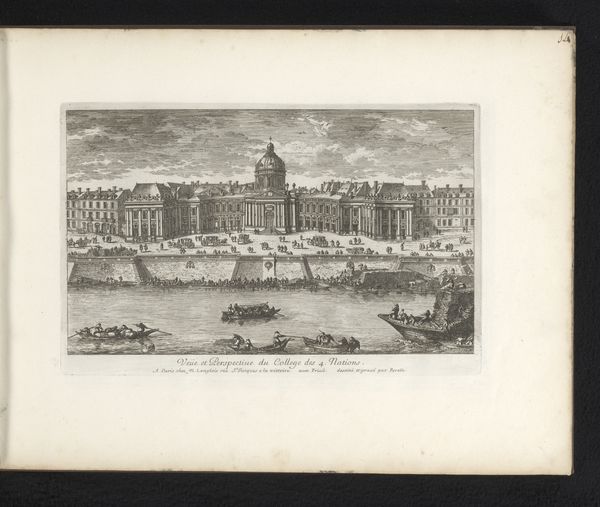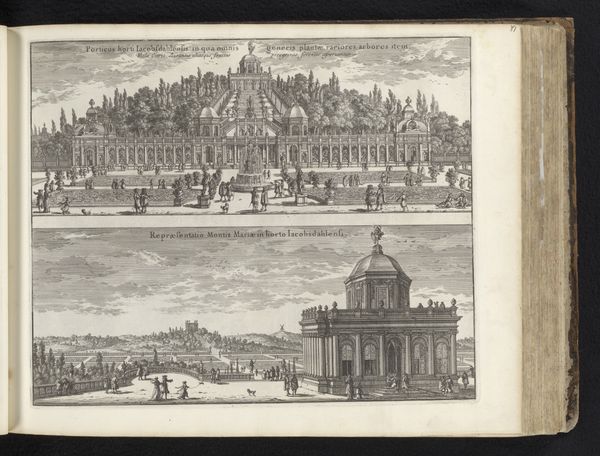
print, engraving, architecture
#
baroque
# print
#
cityscape
#
engraving
#
architecture
Dimensions: height 212 mm, width 346 mm
Copyright: Rijks Museum: Open Domain
Curator: This is Adam Perelle’s “Gezicht op de Catharinakerk in Stockholm,” a 1669 engraving on paper held at the Rijksmuseum. Editor: It’s such a detailed depiction of Stockholm. I am struck by how the artist has captured the city, complete with figures in the foreground, but it seems the Cathedral is the most important feature. How do you approach interpreting this piece? Curator: Given my materialist leanings, I focus on how engravings like these operated within a specific system of production and consumption. Consider the materials: paper, ink, and the metal plate used for engraving. How does the accessibility of printmaking impact the dissemination of architectural and urban images in the 17th century? Editor: So, less about the Cathedral as a symbol, and more about the print as an object? Curator: Precisely. Think about the labor involved – the engraver’s skill, the workshops where these prints were produced, the merchants who distributed them. How does this reproductive technology change the relationship between viewers and the built environment? Were these images meant for locals, tourists, or a wider audience across Europe? Editor: That’s fascinating. So the image’s value isn't just in its artistic merit, but also in understanding its role in a burgeoning print market. Curator: Exactly. And think about the social context! Cityscapes like these contributed to a growing sense of urban identity and national pride. The means of production influences meaning itself, challenging notions of high art. What did prints enable, both materially and ideologically? Editor: I never really thought about prints in this way. I was always concerned about composition and aesthetic considerations but understanding the materials involved adds another layer. Curator: Absolutely. Thinking about materials, production, and consumption reveals much more about the artwork. Editor: Definitely gives a lot to think about in the study of art history and its consumption, shifting from symbol to object in a materialist society.
Comments
No comments
Be the first to comment and join the conversation on the ultimate creative platform.

